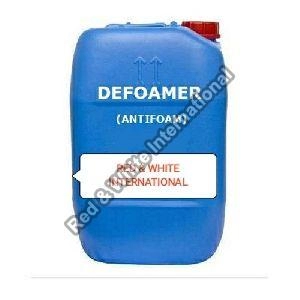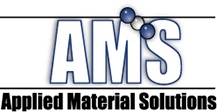What Are Antifoam Agents and How Do They Work in Industrial Processes
Antifoam agents, also known as defoamers, play a critical role in controlling foam formation across many industrial applications. Foam often appears during mixing, agitation, fermentation, or chemical reactions, causing issues like inconsistent product quality, slower processing times, and equipment damage. Understanding what antifoam agents are and how they function helps industries maintain smooth manufacturing operations.
Definition and Purpose of Antifoam Agents and Defoamers
While the terms antifoam agent and defoamer are often used interchangeably, there is a subtle difference:
- Antifoam agents primarily prevent the formation of foam before it becomes a problem.
- Defoamers act to break down and eliminate existing foam quickly.
Both serve the purpose of foam control in manufacturing but may be selected based on specific process needs. Effective foam suppression improves process efficiency and product consistency throughout sectors like food and beverage, pharmaceuticals, wastewater treatment, and chemical manufacturing.
How Antifoams Break Down Foam and Prevent Formation
Antifoam agents work through several key mechanisms:
- Spreading: Antifoams spread rapidly on foam bubble surfaces, disrupting the bubble’s stability.
- Surface tension reduction: They reduce the surface elasticity, causing bubbles to collapse.
- Displacement: Antifoams displace the foaming liquids at the gas-liquid interface.
- Coalescence: They promote bubble coalescence, merging smaller bubbles into larger ones that collapse easily.
By intercepting foam formation early or breaking down bubbles as they form, antifoams maintain smooth flows and prevent process interruptions.
Key Chemical Compositions of Antifoam Agents
Antifoam formulations vary depending on their application and industry requirements. The two main categories are:
- Silicone-based antifoams: Silicone oils and polymers are widely used due to their excellent spreading properties and chemical inertness. They are effective in harsh environments and provide long-lasting foam control.
- Non-silicone organic defoamers: These include oils, waxes, fatty acid esters, and polyacrylates. Non-silicone defoamers are preferred in sensitive industries such as food and pharmaceuticals because they offer biocompatibility and regulatory compliance.
- Hybrid formulas: Some antifoam agents combine silicone and organic components to balance performance and safety.
Selecting the right chemical composition ensures proper foam control while meeting environmental and regulatory standards.
Using the right antifoam agent in industrial processes is essential for smooth production and maintaining product quality. Whether you need a robust silicone antifoam agent or a gentle food-grade antifoam solution, understanding these basics lays the groundwork for effective foam management.
Key Industrial Applications of Antifoam Agents in Industrial Processes
Antifoam agents play a crucial role across various industries, ensuring smooth operations by controlling foam that can disrupt processes and impact product quality. Here’s a closer look at where antifoams are essential:
Food and Beverage Industry
In food manufacturing, especially in brewing, sugar processing, and dairy production, foam formation can lead to inconsistencies and reduce yield. Using effective antifoam agents helps:
- Maintain product quality by preventing foam overflow and contamination.
- Increase operational efficiency by speeding up fermentation and filtration steps.
- Ensure compliance with food safety standards through food-grade antifoam solutions.
Pharmaceuticals Manufacturing
Precision is key in drug production. Foam can interfere with fermentation, mixing, and filling processes, risking batch failures. Antifoam agents help to:
- Maintain accurate dosing and consistency.
- Prevent foam-related equipment malfunctions.
- Support regulatory compliance with pharmaceutical foam control products that meet strict FDA guidelines.
Wastewater Treatment Plants
Foaming is a common issue in aeration tanks and sludge digestion, reducing treatment efficiency and causing operational headaches. Antifoam agents used here:
- Control excessive foam to improve oxygen transfer and overall treatment performance.
- Reduce maintenance and downtime by minimizing foam-related overflows.
- Contribute to environmental compliance with eco-friendly antifoam products.
Pulp and Paper Industry
Foam in pulp and paper processing can cause defects in paper quality and slow down production lines. Antifoam solutions:
- Help improve drainage and fiber bonding by controlling foam.
- Enhance machine runnability and product consistency.
- Prevent waste by reducing downtime and cleaning needs related to foam buildup.
Chemical Manufacturing
Foaming in chemical reactors and distillation units poses risks such as incomplete reactions and equipment damage. Antifoam agents ensure that:
- Processes run smoothly without foam disrupting mixing or heat exchange.
- Product purity is maintained by reducing contamination risks.
- Production costs are lowered through foam suppression in manufacturing.
Across these sectors, choosing the right antifoam—whether silicone antifoam agents or non-silicone defoamers—is critical to balancing performance, safety, and compliance tailored to your industry needs.
Benefits of Using Antifoam Agents in Industrial Processes
Using an antifoam agent in industrial processes comes with several clear benefits that directly impact operations, cost, and sustainability. Here’s how these foam control solutions make a difference across industries:
Improved Process Efficiency and Reduced Downtime
Foam formation can seriously slow down manufacturing lines, wastewater treatment tanks, and chemical reactors. By efficiently breaking down foam or preventing it from forming, antifoam agents help:
- Maintain smooth liquid flow and aeration
- Prevent overflow or equipment damage caused by excessive foam
- Keep sensors and mechanical parts working properly
This means less interruption and more consistent production, saving valuable time and reducing costly downtime.
Cost Savings Through Optimized Resource Use
Controlling foam means using fewer raw materials, energy, and water. When foam builds up, processes might require extra cleaning, delay cycles, or need additional chemicals to correct issues. With the right antifoam:
- The process runs as planned with minimal waste
- Chemical dosing is more precise, avoiding overuse
- Energy consumption decreases by avoiding excess agitation or pumping
These savings add up, boosting overall operational efficiency and helping businesses lower expenses.
Enhanced Product Quality and Consistency
In food and beverage, pharmaceuticals, and chemical manufacturing, foam can affect the quality of the final product by trapping gases or causing uneven mixing. Using foam control agents ensures:
- Uniform reactions and fermentations
- Clean surfaces that help maintain purity
- Stable process conditions that reduce contaminants
The result is higher quality products and reliable batch-to-batch consistency, critical for customer satisfaction and regulatory compliance.
Environmental Benefits Especially in Wastewater Treatment
Foam in wastewater treatment can lead to processing inefficiencies and increased chemical discharge. Applying eco-friendly antifoam agents leads to:
- Reduced chemical use and less sludge volume
- Lower emissions of foam-related pollutants
- Easier water treatment and compliance with environmental regulations
These benefits support sustainable operations and reduce the environmental footprint of industrial plants.
By incorporating the right silicone or non-silicone defoamer for industrial processes, companies can unlock these benefits and improve their overall system performance with minimal impact on costs or the environment.
Why Choose Blissam’s Antifoam Solutions for Industrial Processes
When it comes to antifoam agents in industrial processes, Blissam offers a comprehensive product range designed to meet various foam control needs. Our lineup includes silicone-based antifoam agents known for their high efficiency, alongside eco-friendly, non-silicone defoamers that fit well within stringent environmental regulations. Whether you need solutions for food-grade applications, pharmaceuticals, or wastewater treatment, Blissam has options tailored for the U.S. market and beyond.
High Performance with Industry Compliance and Customization
Blissam stands out by delivering high-performance antifoam agents that ensure reliable and consistent foam suppression. Our products meet critical industry compliance standards, including FDA requirements for food and pharmaceutical sectors. Plus, we understand that every process is unique, so we offer customizable antifoam solutions that can be fine-tuned to specific temperatures, pH levels, and process conditions.
Technical Support and Local Availability
Choosing Blissam means more than just getting top-tier chemicals. We back our products with dedicated technical support to help you select, test, and integrate antifoams into your existing systems efficiently. With local availability and fast delivery across the United States, we make sure our customers have what they need, when they need it, to minimize downtime and maintain smooth operations.
Proven Success in Wastewater Treatment Foam Control
For example, in a recent wastewater treatment project, a client was struggling with persistent foam in their aeration tanks, leading to operational delays and increased chemical costs. Blissam’s team recommended a custom silicone antifoam agent compatible with their biological treatment process. After proper dosing and system integration, foam levels dropped dramatically, process efficiency improved, and chemical consumption decreased—saving the client both time and money.
Blissam’s blend of product quality, compliance, support, and proven field results makes us a trusted partner for controlling foam across industrial sectors in the U.S. Whether you face issues in pulp and paper, pharmaceuticals, or chemical manufacturing, our antifoam agents and expert guidance can help optimize your process.
How to Select the Right Antifoam Agent for Your Industry
Choosing the right antifoam agent in industrial processes is crucial to keeping your operations smooth and efficient. The right defoamer can control foam effectively without causing issues like contamination or downtime. Here’s what to keep in mind when selecting an antifoam for your specific needs.
Key Factors to Consider
-
Process Type: Different industries have unique foam challenges. Whether you’re working in food processing, pharmaceuticals, wastewater treatment, or chemical manufacturing, understanding how foam forms in your process helps pick an effective antifoam agent.
-
Temperature Conditions: Some antifoam agents perform better at high temperatures, while others are designed for cooler environments. Make sure the product you choose can handle your process temperatures without breaking down or losing effectiveness.
-
pH Levels: Foam control depends on compatibility with the system’s pH. Certain silicone-based antifoams work in neutral to alkaline conditions, while non-silicone options might be better for acidic or variable pH environments.
-
Regulatory Requirements: In regulated industries like food and pharmaceuticals, it’s essential to select FDA-approved or food-grade antifoam agents. Compliance ensures safety and avoids legal complications.
Comparing Silicone vs Non-Silicone Antifoams
-
Silicone Antifoam Agents
- Highly effective in breaking down foam fast
- Stable under a wide range of temperatures and pH
- Common in chemical manufacturing, pulp and paper, and wastewater treatment
- Can be odorless and compatible with many production processes
-
Non-Silicone Antifoam Agents
- Often organic-based, suitable for food-grade applications
- Better for sensitive processes needing FDA compliance
- May degrade faster but can be more eco-friendly
- Preferred where residue or contamination risks must be minimized
Tips for Testing and Integrating Antifoams
-
Start with Small Scale Trials: Test different antifoam agents in controlled settings to assess performance and any impact on product quality or process stability.
-
Monitor Dosage Precisely: Overusing defoamers can cause issues like contamination or reduced efficiency. Use proper dosing equipment and adjust based on foam levels.
-
Check Compatibility: Confirm that the antifoam agent works with your raw materials, equipment, and downstream processes.
-
Train Staff on Application: Proper application techniques ensure consistent foam control without wastage.
-
Evaluate Environmental Impact: Especially in wastewater or chemical processing, opt for eco-friendly antifoam options to simplify disposal and reduce environmental risks.
Selecting the right antifoam agent is about balancing performance, safety, and compliance specific to your industry needs. When in doubt, work with a trusted supplier who can guide you on the best solution for your process conditions and regulatory landscape.
Common Challenges and Solutions with Antifoam Agents in Industrial Processes
When working with antifoam agents in manufacturing or treatment systems, a few common challenges tend to pop up. Addressing these issues early keeps your processes running smoothly and avoids costly downtime.
Overuse Leading to Contamination or Inefficiency
Challenge: Using too much antifoam can backfire. Overdosing often leads to contamination, affecting product purity or leaving residues that reduce process efficiency. This is especially critical in sensitive industries like food and pharmaceuticals where product integrity is key.
Solution:
- Proper dosing: Apply antifoam at the right concentration—not too much, not too little.
- Accurate monitoring: Use inline sensors or regular testing to adjust doses based on foam levels.
- Effective application techniques: Disperse antifoam evenly to avoid localized buildup and ensure better foam control.
Blissam supports customers with tailored dosing recommendations and application methods to optimize foam control without excess chemical use.
Regulatory Compliance in Food and Pharmaceutical Industries
Challenge: Strict regulations govern chemicals used in food processing and drug manufacturing. Many antifoam agents fail to meet these standards, risking compliance violations and impacting product safety.
Solution:
- FDA-compliant antifoams: Blissam offers food-grade and pharma-safe antifoam agents formulated to meet U.S. regulatory requirements.
- Eco-friendly formulations: Their products are also designed to reduce environmental impact while maintaining high performance.
- Documentation and support: Blissam provides full compliance documentation to ease audits and regulatory reviews.
Selecting the right regulatory-approved antifoam agent is essential to stay compliant and maintain production quality in regulated sectors.
By understanding these common challenges and using trusted solutions like Blissam’s industry-proven antifoam agents, you can keep your industrial processes efficient, safe, and environmentally responsible. For detailed guidance, explore Blissam’s full range of silicone and non-silicone antifoam products designed for diverse industrial needs.
The Future of Antifoam Agents in Industrial Processes
Growing Demand for Eco-Friendly and Biodegradable Antifoams
In today’s industrial landscape, eco-friendly antifoam agents are quickly becoming the norm. Companies across the U.S. are prioritizing sustainability, pushing the demand for biodegradable defoamers that minimize environmental impact without compromising performance. From food-grade antifoam solutions to wastewater treatment foam control, industries are leaning towards greener alternatives that meet strict regulatory standards while helping reduce chemical waste.
Innovations Driving Foam Control Technology Forward
Advances in foam suppression technology are transforming how industries manage foam challenges. Modern silicone antifoam agents and non-silicone defoamers are now more efficient and versatile, enabling precise control across diverse temperatures, pH ranges, and process conditions. These innovations include:
- Smart formulations that adapt to varying process demands,
- Enhanced dispersion for faster foam breakdown,
- Improved compatibility with sensitive manufacturing processes, especially in pharmaceutical foam control and chemical manufacturing.
Thanks to these breakthroughs, plants can reduce downtime, increase product quality, and cut costs significantly.
Blissam’s Role in Leading Sustainable Antifoam Solutions
At Blissam, we are committed to advancing the future of industrial antifoam agents by offering high-performance, environmentally responsible products. Our portfolio features silicone-based eco-friendly antifoams tailored for industries from pulp and paper foam suppression to food and beverage processing.
What sets Blissam apart is:
- Strict industry compliance including FDA approvals for pharmaceutical and food applications,
- Customizable solutions designed to fit specific process needs,
- Technical support backed by a local presence for U.S. customers ensuring quick response and seamless integration.
By prioritizing sustainability without sacrificing effectiveness, Blissam helps businesses meet both their operational goals and environmental responsibilities—setting the standard for the next generation of foam control.
For more insights on optimizing your industrial processes, explore our [solutions page] and discover how our custom antifoam agents can boost your production efficiency while supporting a cleaner environment.


